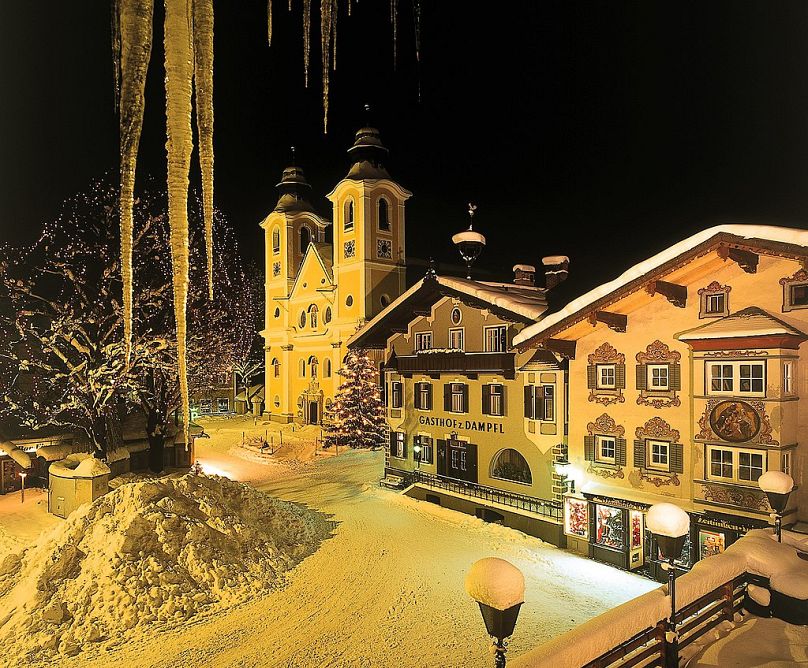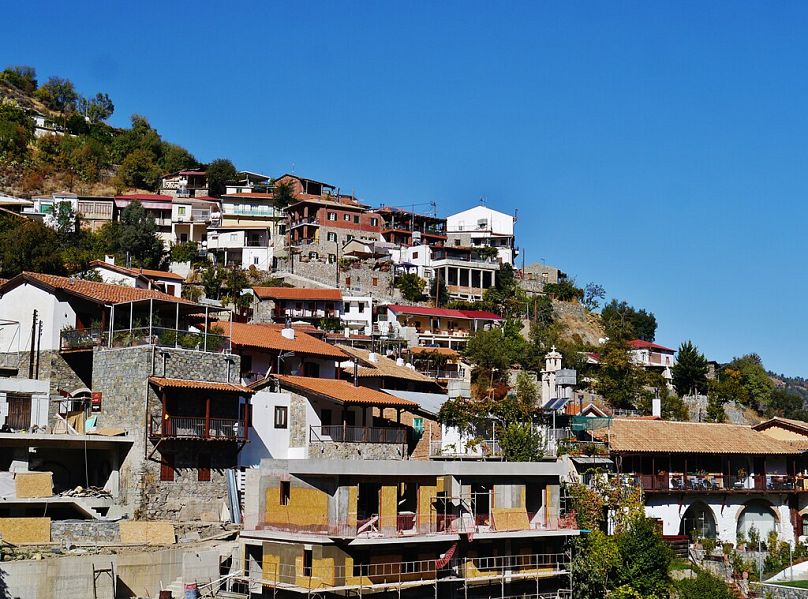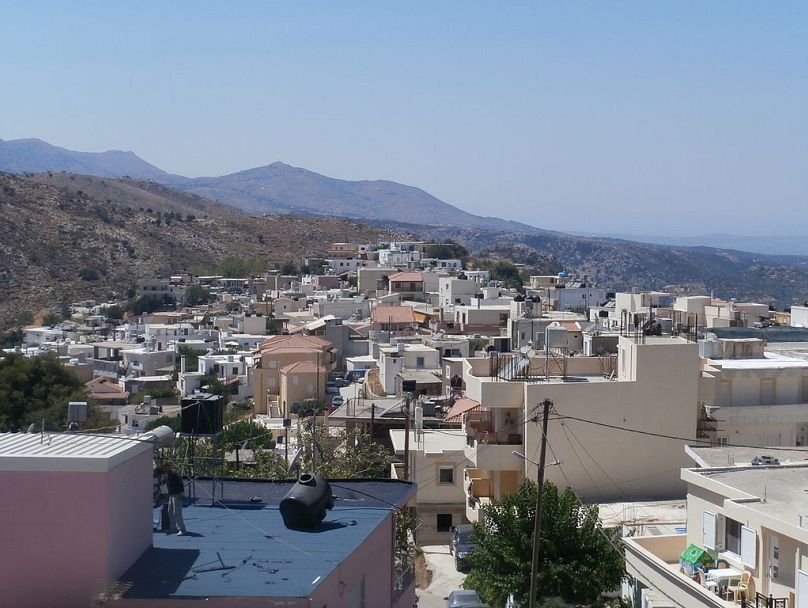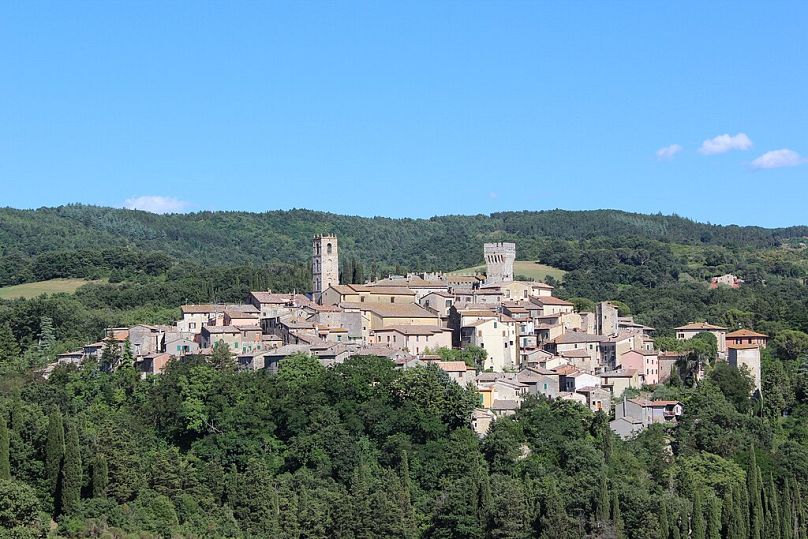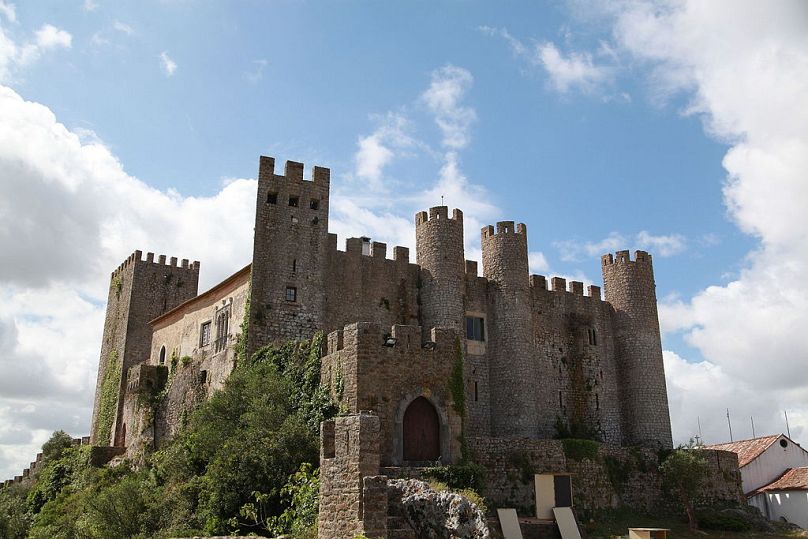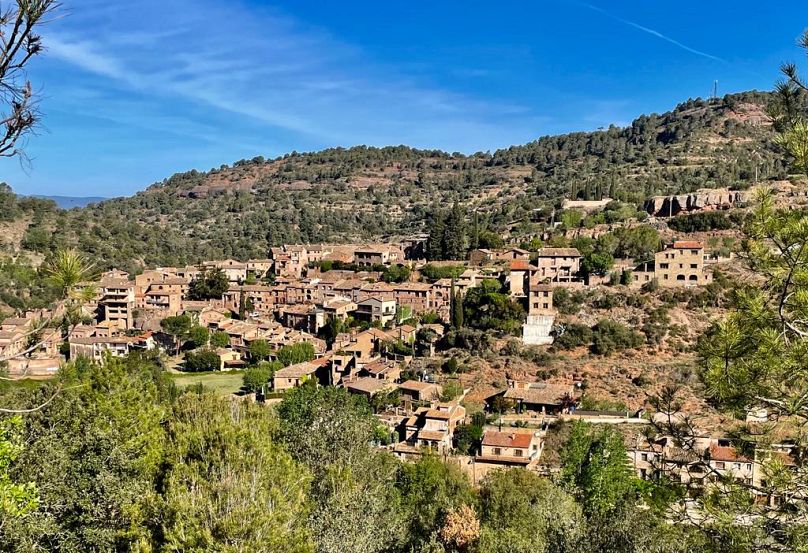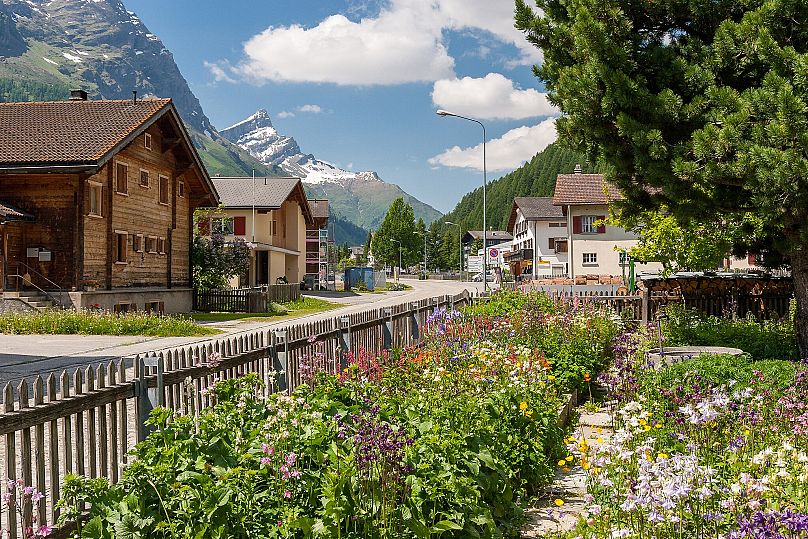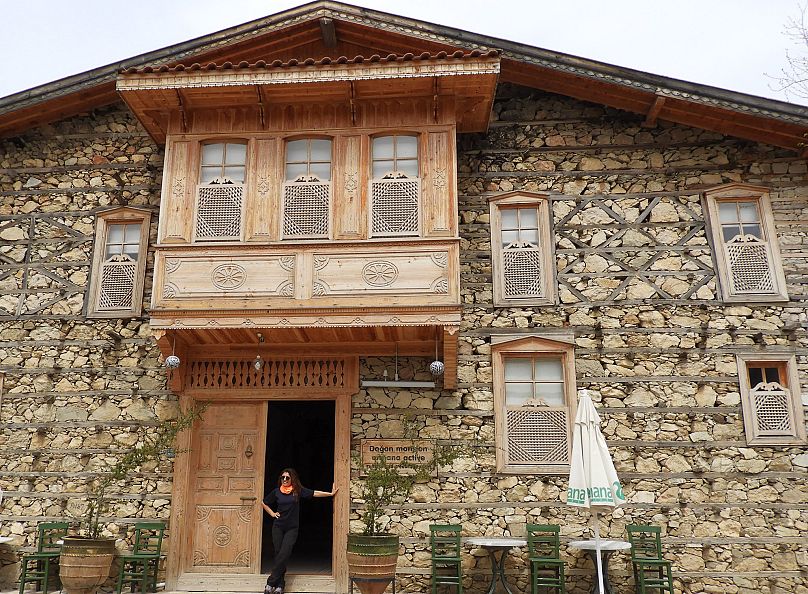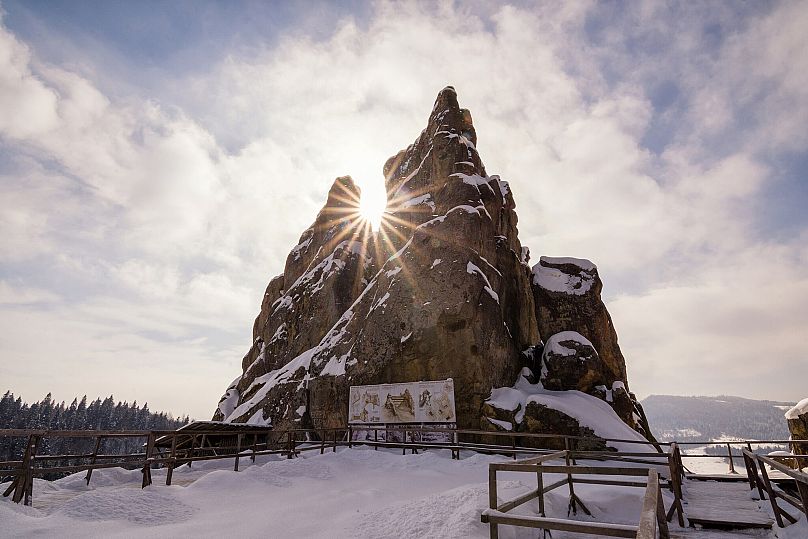Crisp cold wine and bubbling hot springs: Why you should visit Europe’s best villages for 2025
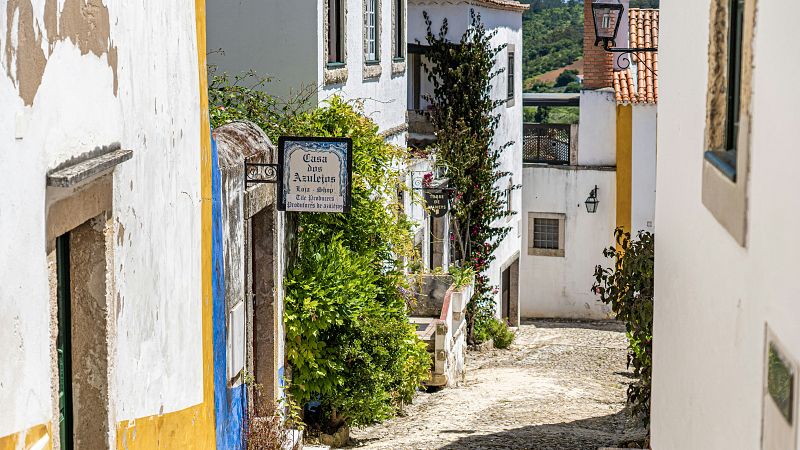
This year has seen destinations from Venice to Amsterdam bring in rigorous new rules like daytripper taxes and Airbnb bans to tackle growing problems with overtourism.
Often, the visitor experience in these hotspots is stressful and frustrating, while local residents suffer from overwhelmed services which results in a growing discontent with tourists.
To encourage sustainable travel - where visitors are part of the solution, rather than the problem - UN Tourism has been releasing an annual list of Best Tourism Villages since 2021.
These lesser-trod destinations tempt tourists off the beaten track to places where tourism helps to preserve cultures and traditions, celebrate diversity, provide opportunities and protect biodiversity.
“Tourism is a vital tool for inclusion, empowering rural communities to protect and value their rich cultural heritage while driving sustainable development,” says UN Tourism Secretary-General Zurab Pololikashvili.
“The Best Tourism Villages initiative not only recognises the remarkable achievements of these villages but also highlights the transformative power of tourism.”
Globally, 55 villages - 14 of them in Europe - received the award this year. Here’s where to find winemaking, wellness and walking in Europe’s villages.
St Johann in Tirol, Austria: For ancient churches and panoramic hiking
Located at an altitude of 659 meters in the majestic Kitzbühel Alps, St Johann in Tirol is a vibrant market town.
It has a long history dating back to the 6th and 7th centuries when Bavarians first settled the valley. Since then, St Johann has developed into a community of 9,885 residents.
The town is named after its church dedicated to St John the Baptist, built by missionaries in the 8th century.
Today, it offers an array of year-round activities, from winter sports on pristine pistes to summer hiking and mountain biking.
Tourism in St Johann is pivotal in creating jobs and supporting local businesses, which is essential for the development of the rural economy.
To enhance mobility for locals and tourists, St Johann has implemented a cutting-edge digital traffic guidance system. Using GPS technology, the system optimises traffic flow and provides real-time information about traffic conditions.
Kalopanagiotis, Cyprus: For winemaking and wellness retreats
Kalopanayiotis in Cyprus is situated at an elevation of 700 metres in the lush Marathasa valley on the steep banks of the Setrachos River.
Marathasa, part of the Troodos UNESCO Geopark, is home to a diverse ecosystem of forests, springs and natural vegetation interspersed with small agricultural plots of deciduous trees and vineyards.
Kalopanayiotis is characterised by traditional architecture, narrow cobblestone streets and scenic views of the river and tranquil valley landscape. With mild winters and cool summers, it offers year-round opportunities for tourism focused on nature, culture and tradition.
Visitors can get involved in hands-on experiences in making traditional halloumi cheese, producing grape must (crushed juice, skins and stems) products, beekeeping and honey extraction, wine tasting and walks through high-altitude vineyards.
The area’s hot springs have drawn visitors since ancient times. This region was once part of the ancient Kingdom of Soli and kings frequented the area as a wellness retreat during their hunting excursions.
Today, this heritage is complemented by luxurious spa treatments and revitalisation experiences.
Anogeia, Greece: For mythology, Minoans and stargazing
Clinging to the slopes of Mount Psiloritis, Anogeia means ‘Highlands’ in Greek. It is a village steeped in myth and history and is known for its unique culture and the resilience of its inhabitants.
This rugged mountain terrain is the birthplace of ancient legends and is home to Zominthos, a key Minoan archaeological site.
Anogeia is actively training residents as certified nature guides, who will lead visitors through the breathtaking landscapes of the Psiloritis UNESCO Global Geopark. This initiative emphasises responsible ecotourism by minimising environmental impact while educating visitors about the unique ecosystems found in the area.
Just outside Anogeia, visitors can experience traditional livestock farming at an open-air museum. Guests engage with the daily lives of Anogeian shepherds, learn about traditional cheese-making techniques and participate in various music and dance events.
Astronomy enthusiasts can visit the nearby Skinakas Observatory at 1,750 metres above sea level.
San Casciano dei Bagni, Italy: For thermal waters and e-biking
San Casciano dei Bagni, a town of around 1,600 residents in the region of Tuscany, has been a hotspot for wellness tourism since ancient times. It is renowned for its therapeutic thermal waters and significant archaeological discoveries including Etruscan and Roman statues.
The village is one of ten municipalities participating in a pioneering Rural Bike Sharing Project, promoting sustainable tourism in the Valdichiana and Val d’Orcia regions.
By offering e-bikes and traditional bicycles for rent, the project encourages visitors to explore the stunning countryside while minimising their environmental impact.
Óbidos, Portugal: For rich architecture and lively festivals
Located 80 kilometres north of Lisbon, Óbidos is a medieval village encircled by formidable high walls.
Óbidos is home to a monumental castle that overlooks the town’s whitewashed houses and winding cobblestone streets below.
The buildings are a confection of Gothic, Renaissance and Baroque architecture which has led to Óbidos being described as an open-air museum.
The Municipality of Óbidos is dedicated to showcasing its cultural assets through a lively calendar of events including a Chocolate Festival, Medieval Market, International Literature Festival, and Óbidos Christmas Town.
Mura, Spain: For scenic hiking and immersion in nature
Mura is located in the Bages region of Barcelona and sits at an altitude of 454 metres. It covers an area of just over 47 square kilometres and 89 per cent of this is designated as part of the verdant Sant Llorenç del Munt i l’Obac Natural Park.
The village is considered a gateway to the natural surroundings of mountains, forests and lakes. The municipality offers a variety of trails and paths that enable visitors of all skill levels to explore the rich biodiversity of the area.
Mura’s past is deeply intertwined with viticulture, showcased by its unique stone wine presses called ‘lagares’ that you can still see in vineyards.
The historic town centre is characterised by narrow streets, busy squares and winding passageways.
Splügen, Switzerland: For local beer and biodiversity
Perched at an altitude of 1,450 meters, Splügen serves as the economic and cultural heart of the Rheinwald region in the Swiss Alps. The village has a rich history of trade and tourism as it lies along the historic routes of the Splügen and San Bernardino passes.
Known for its stunning natural landscapes, including crystal-clear lakes and a glacial environment, Splügen is a haven for outdoor enthusiasts year-round.
Since becoming part of the Beverin Nature Park in 2020, the community has committed to promoting sustainable tourism that honours the area’s biodiversity and cultural heritage.
Set to open in 2025, the Speluca brewery and hotel will revitalise an underused area on the village’s outskirts. The project combines an old barn, an abandoned hotel from the 1960s and new structures designed to reflect the historic village landscape.
Ormana, Türkiye: For nomadic heritage and ancient ruins
Ormana in the Antalya province is steeped in Hellenistic origins and surrounded by the breathtaking Taurus Mountains.
Its architectural treasures include the Button Houses, which are traditional dwellings adorned with unique architectural features that echo the village’s nomadic heritage.
The OrmanaActive Initiative has revitalised the village by restoring these structures and opening them as boutique accommodations.
Ormana is also home to ancient ruins including the Erymna Ancient City and Tol Han Caravansarai.
The community is pioneering sustainable tourism practices through initiatives like the Camping and Caravan Park and the establishment of a Dark Sky Park.
Urych, Ukraine: For traditional customs and crafts
Urych is surrounded by the majestic Carpathian Mountains and the lush forests of the Skolivski Beskydy National Nature Park.
The village is renowned for the remnants of the Tustan fortress, a remarkable wood and rock structure from the 13th to 16th centuries.
Designated as a national cultural monument and part of a state historical reserve, the fortress served as a vital trade and defensive site during its time and showcases the unique architectural and engineering techniques of the period.
Urych is also situated in the ethnographic region of Boykivshchyna, where traditional customs, dialects and crafts are meticulously preserved.
Today


